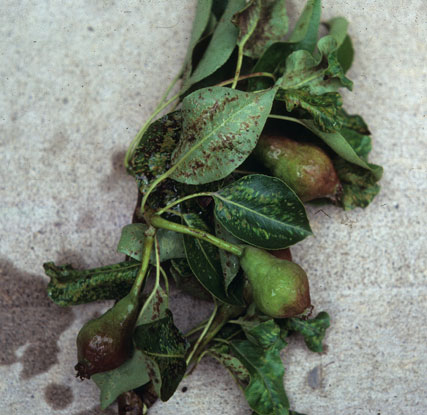Pear blister mite, the almost invisible 0.2 mm mites live on mesophyll and cause blisters in the leaf, followed by galls.
Also known as:
Pearleaf blister mite
Do not confuse with:
Tongues of Fire
Pear blister mite (Eriophyes pyri). The almost invisible 0.2 mm mites live on mesophyll and cause blisters in the leaf. Starting in March, the young mites cause small, green bumps or “pocks” on the young leaves by sucking up the plant sap. In late April, the bumps turn dull red and then turn black. The young fruits are usually not affected.
Later, galls develop on the leaves and pears. During the season, the galls turn black and the leaves yellow and fall off prematurely.
Affected pears show rough spots.
The pear blister mite overwinters in the leaf buds. In spring, the mites lay eggs in the swelling flower and leaf buds. The young mites live off the outgrowing blossoms and leaves. There are several generations each year.
Where to find
- Pear tree
- Rowan
Control
Difficult to to control; hidden in buds or galls, the mites are inaccessible. In professional horticulture, blister mites are controlled with miticide the moment they emerge to lay eggs.
Prevention
In professional horticulture, pear trees susceptible to pear gall mite are treated with pesticides in the spring to prevent infestation by mites.

